At the start, your surfboard is most likely beautiful, vibrant, and clean. But as it gets older, you may start to notice a yellow discoloration.
Of course, with the discoloration, your surfboard won’t look as nice, and you probably won’t be too happy.
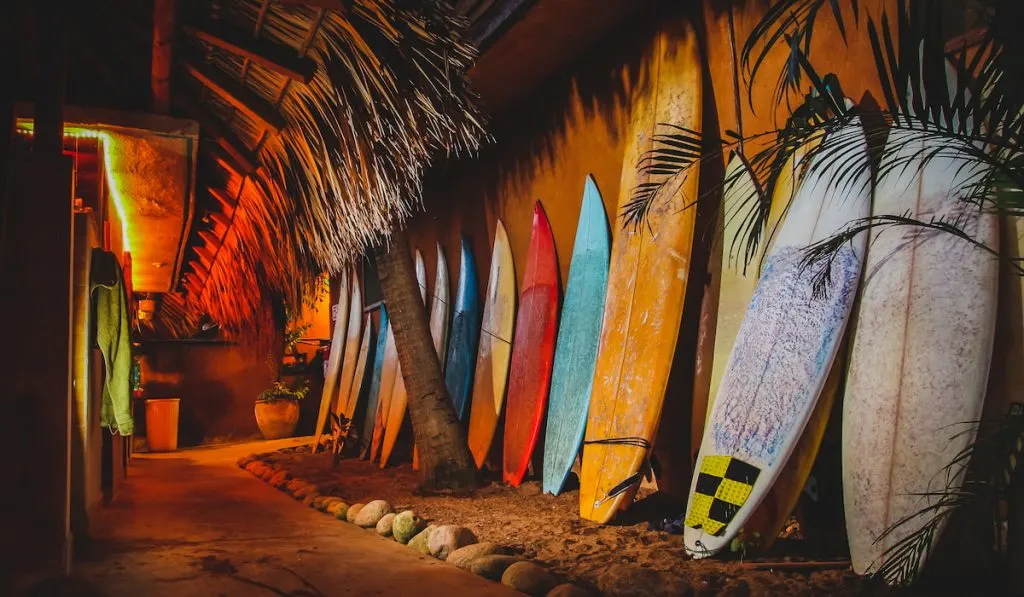
Why does a surfboard turn yellow?
Surfboards turn yellow for various reasons. Top among those reasons is exposure to ultraviolet light from the sun. The foam, fiberglass, or resin used in making surfboards react to exposure to the sun by turning from white to yellow. Some of these materials come with additives that slow down the discoloration while others do not. This is why some surfboards turn yellow much faster than others.
Discoloration is a normal process for all surfboards as they age. The good news is you can slow this process with the right steps.
In this article, we shed more light on the discoloration process that affects so many surfboards.
We also share tips that can help you prevent your surfboard from turning yellow.
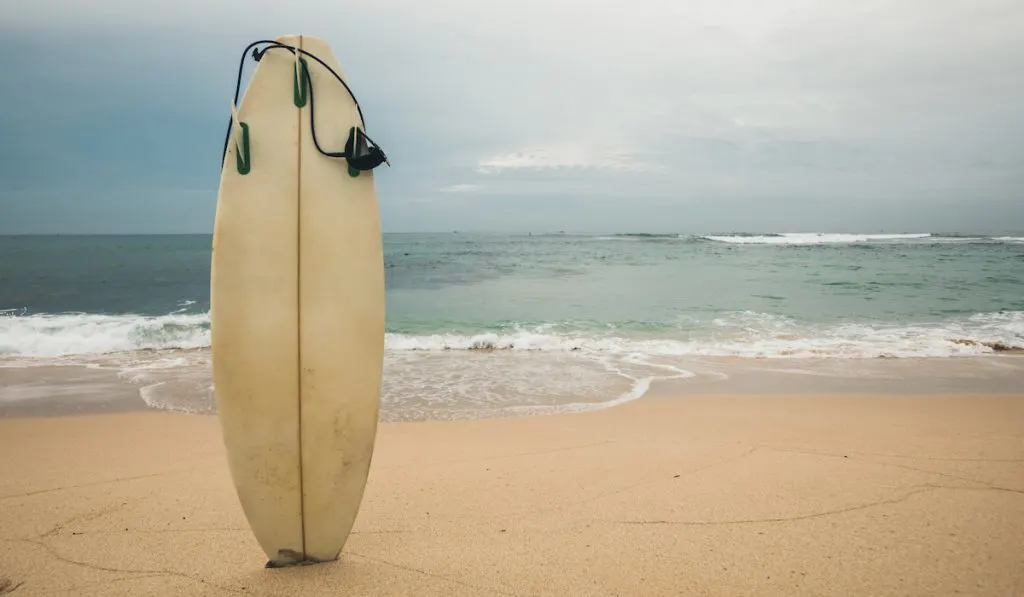
Why Does a Surfboard Turn Yellow?
Surfboards typically turn yellow for 2 main reasons: UV radiation from the sun and unprotected foam.
UV Radiation From the Sun
The main reason surfboards turn yellow is sunlight. The materials used in making surfboards react to prolonged exposure to sunlight.
The outcome of the reaction between the materials and sunlight is discoloration.
But keeping a surfboard out of the sun to protect its appearance is nearly impossible.
Surfers use their surfboards outside predominantly during the day time. As such, surfboards are exposed to the sun nearly whenever they are in use.
Additionally, some surfers leave their boards out in the sun after they are done surfing. This extra exposure to the sun accumulates and gradually deteriorates the board’s material.
While people leave their surfboards under the sun thinking it’s harmless, it isn’t.
The yellow discoloration is not the only possibility. The heat from the sun can also damage the board. For one, the heat may cause your board’s deck to warp and bubble.
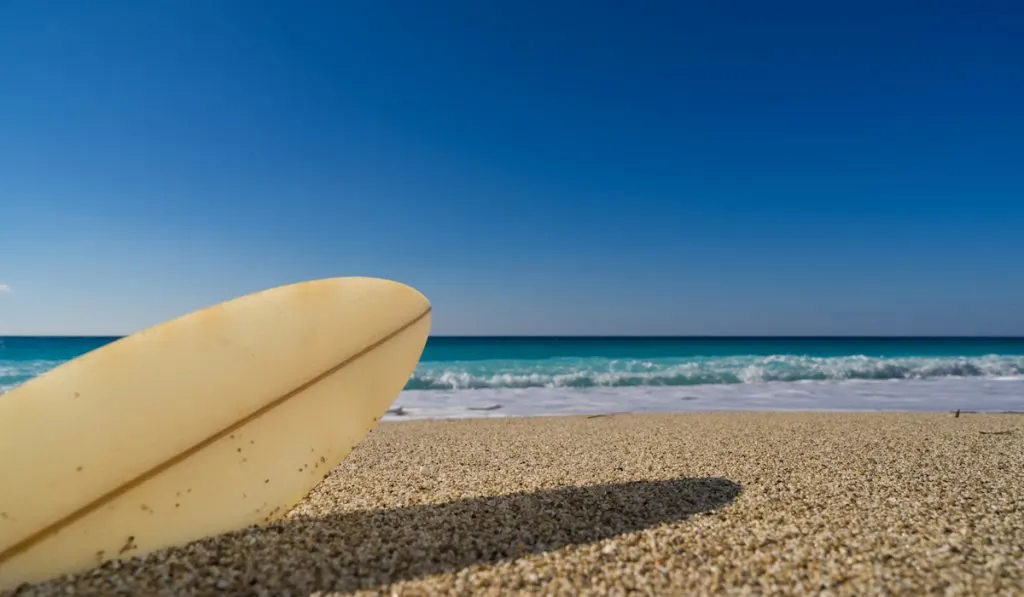
Surfboards are made from various materials including foam blanks, fiberglass, polyresin, and epoxy resin.
Polyresin and epoxy resin surfboards are more resistant to discoloration than foam blanks and fiberglass since they include UV filters and other additives that stabilize them.
This does not mean they will not ultimately become discolored. It is only a matter of time before these materials turn yellow.
Fiberglass and foam blanks, on the other hand, do not have UV filters or stabilizers. Surfboards made with them usually turn yellow faster.
Since surfboards turn yellow over time, you should pay attention to the color of the surfboard you get.
White surfboards typically reveal yellowing easily and you might want to reconsider this option.
Surfboards with darker colors hide yellowing better, they usually fade over time when exposed to the sun.

Unprotected Foam
Besides prolonged exposure to the sun, if the material used in making a surfboard is unprotected, it will turn yellow.
Foam blanks do not have additives, so they are not protected from the sun’s UV light. While in some cases these foam blanks are covered with layers of resin, this protection can be compromised.
In some cases, the surfboards are laminated to offer some UV protection. Remember we mentioned how the sun’s heat causes bubbles?
When this happens, the surface of the board is delaminated and exposed. Then with time, it will get discolored.
Besides bubble formation, warps, breaks, and dings will leave your board open to UV radiation.
Of course, when this happens, the board will turn yellow over time. This damage will also let saltwater into the board, which contributes to deterioration.
Tips to Prevent Your Surfboard From Turning Yellow
The bad news is yellow discoloration of surfboards is inevitable. But the good news is you can prevent it or slow down the process with the following tips:
Repair Damage
When the surface of your surfboard breaks or dents, the foam blank and the protective resin layers are exposed to damage.
The damage will come from the sun and saltwater, and your board will end up discolored.
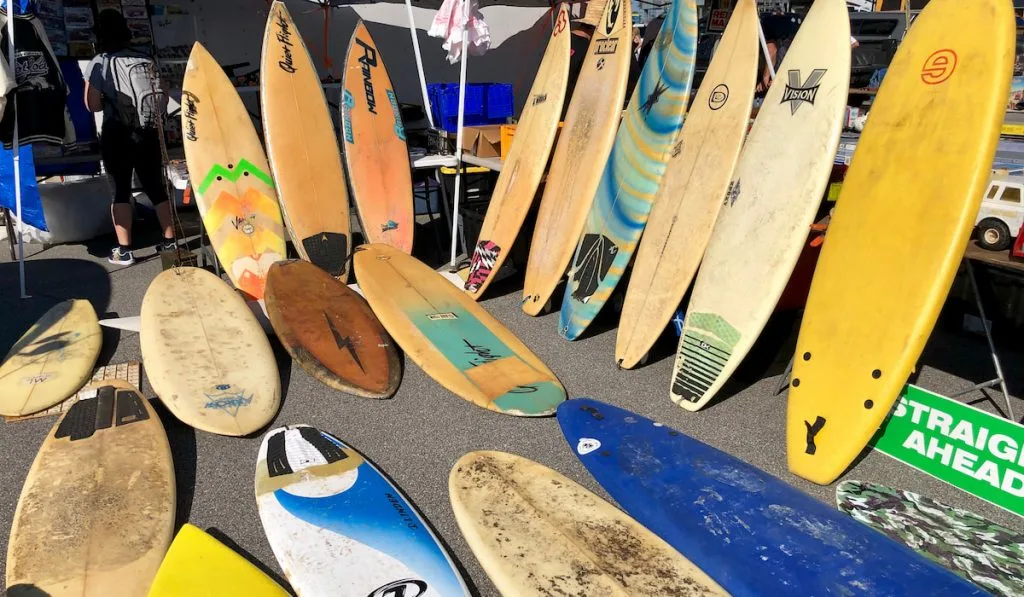
When you notice a break or ding on your board, you should fix it immediately. If you leave it unchecked, the break will get wider, and the discoloration will occur faster.
Immediately when you notice a ding or break in your surfboard, you should wash it with freshwater.
he freshwater will dilute any saltwater that may have entered the board and reduce potential adverse effects.
After doing this, examine the break. If it is something minor, you may try fixing it with a kit at home. You can get a surfboard repair kit online or in a local shop.
In a case where the ding is major, you may have to take the surfboard to a surf repair shop.
Get a Board Bag
Instead of repairing a damaged board, you can reduce the amount of UV light that gets to your board in the first place.
To do this, get a board bag for your surfboard. Board bags shut out UV rays from surfboards.
So, even when you have to be outdoors with your board under the sun for long periods, you can keep it protected.
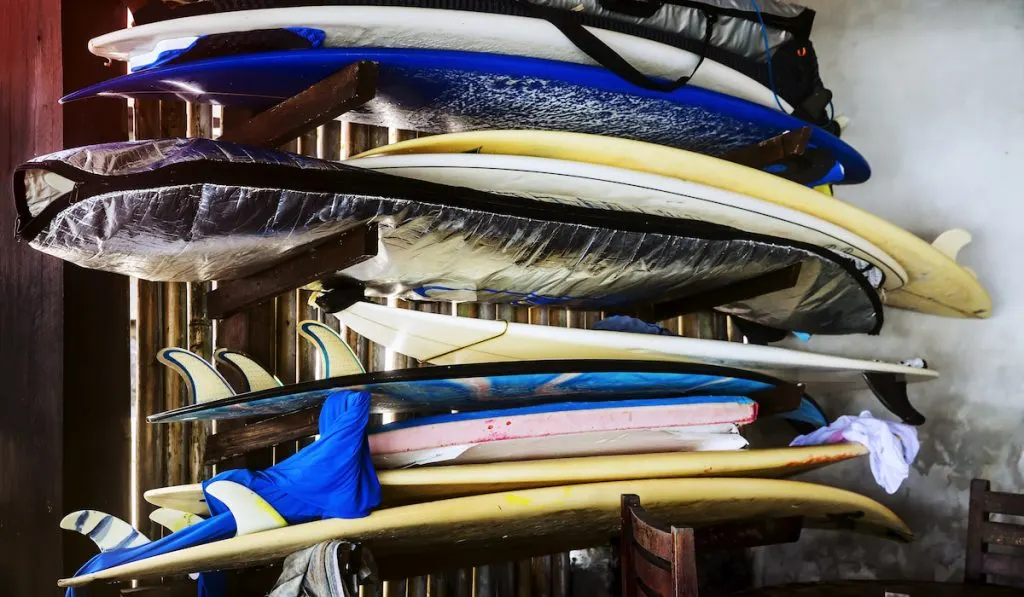
Most board bags do not only block UV light from surfboards. They also have heat-reflective technologies.
This is very vital since heat can also damage your board by exposing the protective layers.
Remember, heat contributes to the formation of bubbles and delamination of the surface of surfboards.
Board bags are usually padded. This padding serves as cushion to ensure that the board does not break or dent on impact.
If you do not have a board bag, you can use a damp towel. While the towel blocks out the UV from the sun, the dampness helps to cool the board.
How to Remove Yellow Discoloration From Your Surfboard
If your board is already yellow from discoloration, you might be able to remove, reverse, or conceal the damage.
Polish the Surfboard
To remove yellow discoloration from your surfboard, you can try polishing it using a Scotch Brite Pad.
A Scotch Brite Pad is an abrasive pad made of aluminum oxide.
It is employed in various general facelift projects. You can use it for removing blemishes, priming, scuffing, and much more.
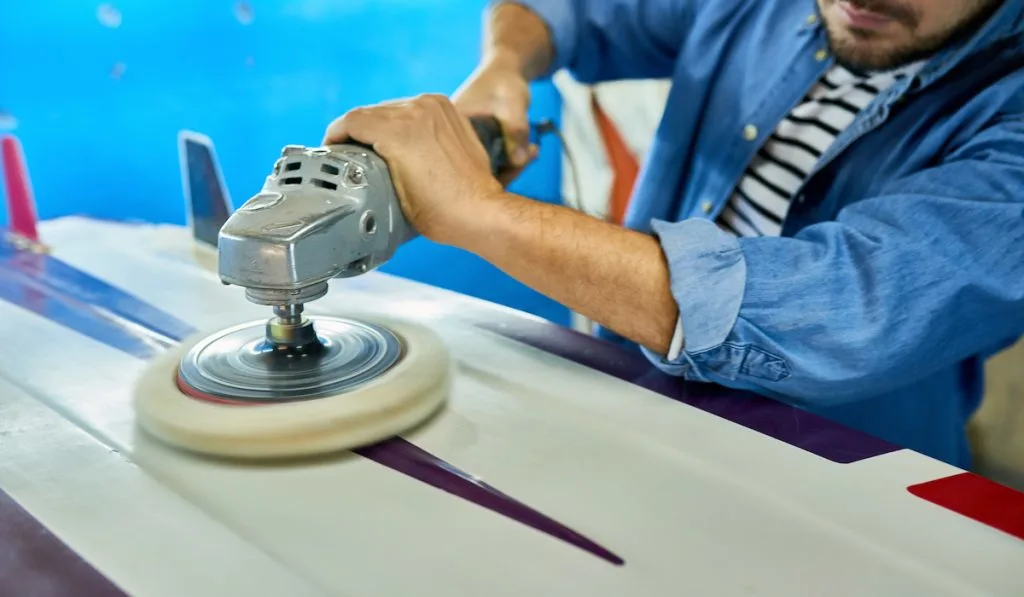
All you have to do is gently brush the discolored surface of your board with this pad. As you do, you will be knocking the discoloration off its surface.
One advantage of the Scotch Brite Pad is that it won’t ruin the board’s resin layers unless you use it very often.
Paint the Surfboard
You can also repaint the surfboard. This might be a bit more expensive, but it is an opportunity for you to personalize your surfboard.
Before setting out to paint, ensure you clean the surface in preparation.
The surface of your surfboard should not have any dust, wax, oil, or similar dirt on it.
If these substances are on your surfboard, you can remove them with a damp cloth, a wax comb, or acetone.
After cleaning the board, smooth the surface with a piece of 32-grit sandpaper. Once the surface is smooth, you may then proceed with painting.
Apply your acrylic paint, then seal with a UV-resistant finish. Allow the paint to dry before you use it.
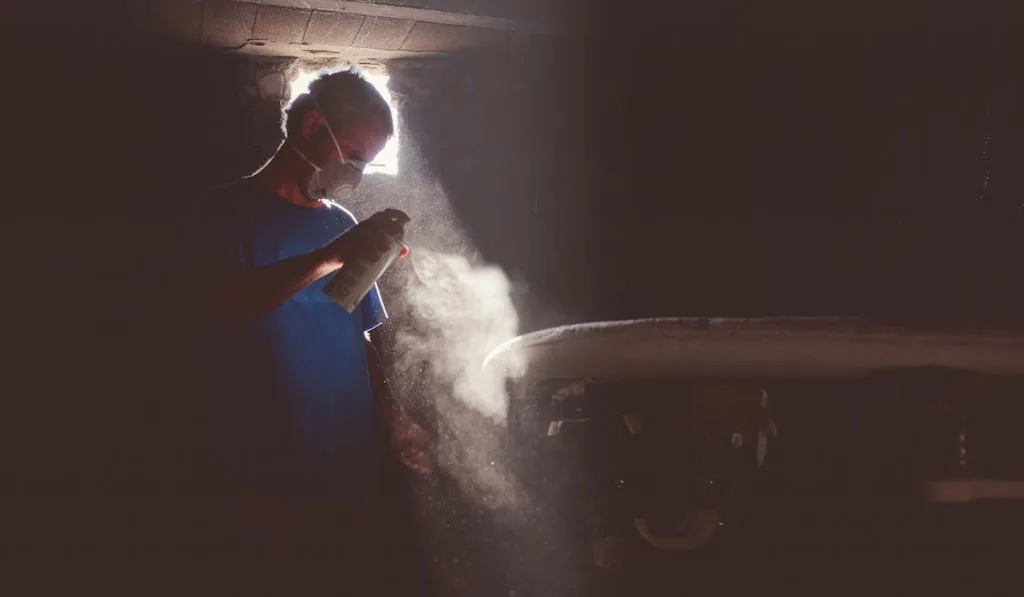
Final Take
Surfboards will ultimately turn yellow with time. Exposure to the UV rays from the sun and to the saltwater of the sea will ensure that.
Although the yellow discoloration of surfboards is the usual order of things, you can slow or prevent the process. By using board bags and constantly monitoring for breaks, your board will not turn yellow quickly.
